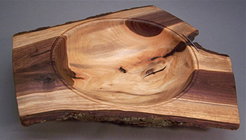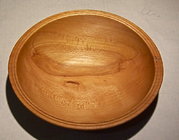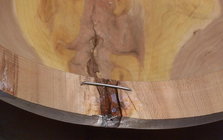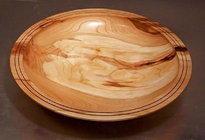Suggestions on what to use for fixing so that I don't ruin the blue dye job too bad by sanding etc.
Super glue in the cracks then super glue the whole as a finish?
This is another example of a rookie mistake on the learning journey of woodturning experiments.
Tried the RIT dye the way that is recommended for fabric. Did get a better color just too much water involved and it cracked when dried.
Super glue in the cracks then super glue the whole as a finish?
This is another example of a rookie mistake on the learning journey of woodturning experiments.
Tried the RIT dye the way that is recommended for fabric. Did get a better color just too much water involved and it cracked when dried.











